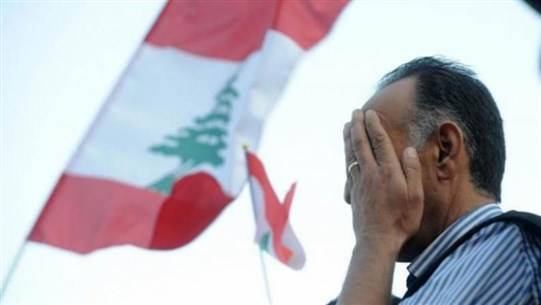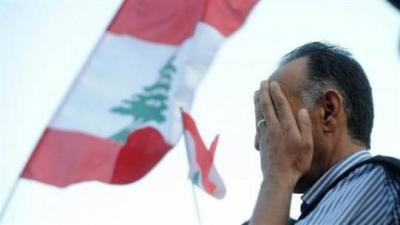The "Economic Recovery Plan" of Prime Minister Najib Mikati's government has quickly brushed aside social issues. The comprehensive decline in living conditions for the majority of social segments warranted no more than two pages in the 32-page plan. This is not due to ignorance of reality, but rather a complete awareness of trivializing the issue and restricting it to a few groups, intended to be treated in the future with "light" assistance "painkillers." The plan emerged as a social embarrassment, having been economically undermined from its inception. The drafters have yet to dare set a date for discussing it in the House of Representatives, despite its approval in May 2022 and its subsequent revision in early September.
Far from the overwhelming gap figures, the blatant exchange rates, and insufficient compensations, those who met at the "Participatory Workshop on the Integration of Social and Economic Policies and Desired Reform Programs," held at the “Economic, Social, and Environmental Council,” upon the invitation of the Network of Arab NGOs for Development, agreed on the impossibility of any plan succeeding if it does not give required importance to the social dimension. According to the network's executive director, Ziad Abdel Samad, "The government's plan does not reflect a social policy as much as it is a collection of quick measures intended to be taken," despite relatively significant but fragmented social spending, and the existence of a clear plan being circulated from community initiatives supported by international organizations, which adopt a qualitatively different approach in addressing social challenges. This necessitates the adoption of a national strategy that starts from a rights-based approach, namely the right to social protection, addressing three main axes: rapid response to increasing needs, equality among citizens, and ensuring justice in opportunities.
### Comprehensive Poverty
The issue with the social policy in the latest version of the government’s recovery plan, titled "The Lebanese Government Files on Financial and Economic Reform Policies" dated September 9, 2022, is that it addresses the social crisis from the perspective of poverty. "This does not apply today to reality and did not apply before," according to development expert Adib Naemeh. "The poverty rate in Lebanon was estimated at 35 percent in 1998. After three years since the outbreak of the crisis in 2019, it no longer makes sense to talk about a poor class that needs assistance but rather about a deterioration in the living conditions of Lebanese citizens and comprehensive impoverishment."
The numbers clearly show that the percentage of families earning less than $600 per month rose from 18 percent in 2019 to 84 percent in 2022. The accompanying table below indicates that only 3 percent of families earn more than $600 monthly.
### 62 Percent Informal Employment
Among the alarming indicators recorded in Lebanon in 2022 compared to 2019, based on central statistics, are:
- The percentage of the population covered by health insurance decreased from 55 percent to 49 percent.
- The share of private health insurance dropped from 22 percent to 14 percent (middle classes).
- The economic activity rate fell from 49 percent to 43 percent.
- The unemployment rate rose from 11.4 percent to 30 percent (according to narrow definitions), and the partial unemployment rate among youth increased from 29 percent to 64 percent.
- The percentage of informal employment rose from 55 percent of the labor force to 62 percent, and the rate of formal employment in the regular sector dropped from 45 percent to 35 percent.
- The reliance on government assistance increased from 5 percent to 11 percent.
- The percentage of families receiving remittances from their traveling members rose from 10 percent to 15 percent.
### Social Solutions First
According to Naemeh, all these negative indicators represent "a process of comprehensive impoverishment, against the backdrop of a very small minority that has not only maintained its previous status but has also benefited and increased its wealth." This has completely opposite repercussions to the one-sided focus on addressing policies aimed at social protection and combating poverty for about 17 percent of the population. From here, Naemeh sees the "necessity of reinstating consideration for the social dimension of development and social policies in its general sense, centered on social protection. Solutions must begin with the social dimension, then the economic, and finally the political. This is the natural path upon which the recovery plan should be built, consistent with Lebanon's signing of the Millennium Development Goals, which focus on achieving development in its comprehensive economic and social sense.”
While the government's recovery plan focuses on the ESSN program, which targets 147,000 families at a cost of $246 million, Naemeh believes the alternative lies in transitioning to a comprehensive model that can be implemented in Lebanon. This has been developed in collaboration between the International Labour Organization (ILO) and UNICEF. Moreover, there is little point in any social measure without controlling the currency collapse and the depreciation of the exchange rate, along with the ability to secure public services for citizens, foremost among them electricity and public transport.
### The Plan and Taxes
The social content is clearly undermined by the intended tax policy, where indirect taxes will increase ninefold between 2021 and 2026, while direct taxes will rise by less than fourfold during the same period. While the VAT rate will be increased from 11 percent to 15 percent, the corporate tax will remain around 17 percent. This represents an economic bias, according to Naemeh. Their goal is not to enhance citizens’ welfare but rather to cater to certain private interests.
### A Disjointed Plan
The participatory dialogue meeting included a group of experts and policymakers, opened by the Chairman of the Council, Charles Arbid, who stated that the Council was informed of the plan without being involved in its drafting. It is known that the Council’s opinion survey has become mandatory for anything related to economic, social, and environmental plans and visions. As for the plan, it is closer to concepts than to an integrated plan. Arbid notably pointed out that the plan's figures are mere projections that raise more questions than they provide answers, specifically regarding the financial and monetary aspects. It falls short of revitalizing the economy and launching the wheels of growth and development, especially since it does not take into account the societal changes that occurred with the onset of the crisis. Therefore, the plan must be more inclusive and participatory, emerging from the grassroots that includes all stakeholders.
The government's negligence of the recovery plan and poverty alleviation policies is akin to an ostrich burying its head in the sand. Just as the ostrich will not disappear, social problems, particularly poverty, will remain a societal affliction and a reason for stagnation and lack of recovery, no matter how positive economic figures and indicators may look.




